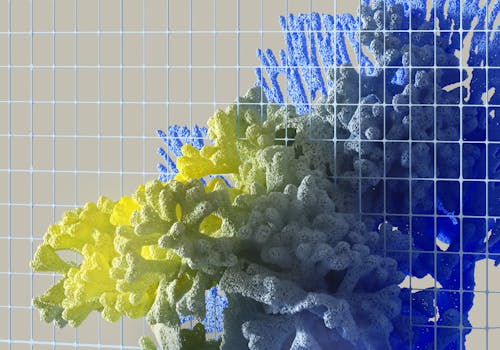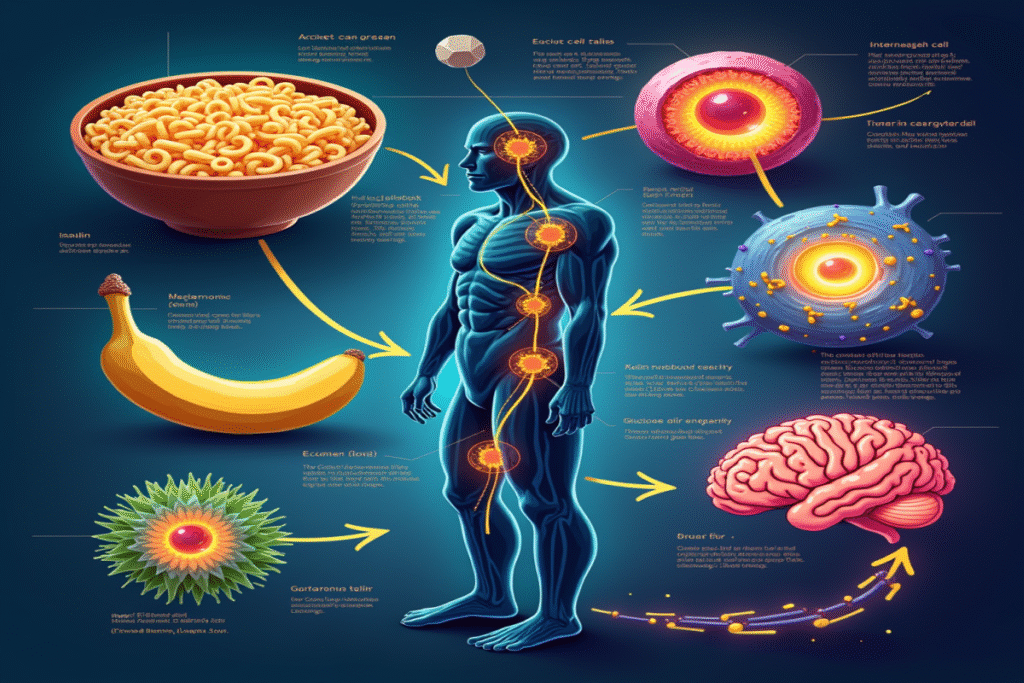Table of Contents
- Introduction to Artificial Intelligence and ChatGPT
- What is ChatGPT and How it Works
- Registration and Access to the Platform
- Differences between ChatGPT-4, ChatGPT-4o, and ChatGPT-4o Mini
- Navigating the ChatGPT Interface
- The Art of Writing Effective Prompts
- Practical Examples of Prompts for Various Activities
- Techniques for Optimizing Results
- Recognizing and Overcoming ChatGPT’s Limitations
- Ethical Considerations in the Use of AI
- Practical Applications of ChatGPT in Work and Daily Life
- The Future of Conversational AI and ChatGPT
- Conclusion: Maximizing ChatGPT for Your Goals
Introduction to Artificial Intelligence and ChatGPT
What is Artificial Intelligence?
Artificial Intelligence (AI) is a branch of computer science that focuses on creating systems capable of simulating human intelligence. These systems are designed to learn, reason, and solve problems autonomously. AI relies on complex algorithms and large amounts of data to improve its performance over time. The applications of AI are vast, ranging from robotics to voice recognition, from autonomous driving to virtual assistance.
ChatGPT: An Innovation in Conversational AI
ChatGPT is an advanced language model developed by OpenAI, based on the GPT (Generative Pre-trained Transformer) architecture. This AI system has been trained on a massive amount of text from the Internet, allowing it to generate coherent and contextually appropriate responses to a wide range of questions and prompts. ChatGPT stands out for its ability to understand context, maintain fluid conversations, and provide information on a broad variety of topics.
How Does ChatGPT Work?
ChatGPT uses a deep learning approach called “transformer,” which allows it to analyze and understand natural language. When it receives input, the system processes the information through multiple layers of neural networks, considering the context and relationships between words. Based on patterns learned during training, ChatGPT generates a response that aims to be as relevant and accurate as possible. It is important to note that despite its impressive capabilities, ChatGPT does not have real understanding or consciousness but relies on statistical correlations to produce coherent outputs.
Potential and Limitations of ChatGPT
The potential of ChatGPT is enormous. It can be used for customer assistance, content creation, programming support, language translation, and much more. However, it is crucial to understand its limitations as well. ChatGPT can make mistakes, provide outdated information, or sometimes generate plausible but incorrect responses. Additionally, the system can be influenced by biases present in the training data. Therefore, it is always advisable to verify critical information obtained through ChatGPT and use it as a support tool rather than a definitive source of information.
What is ChatGPT and How it Works

Definition and Origins of ChatGPT
ChatGPT is an advanced language model based on artificial intelligence, developed by OpenAI. Launched in November 2022, it represents the evolution of the GPT (Generative Pre-trained Transformer) series. ChatGPT has been trained on a vast corpus of texts from various online sources, allowing it to understand and generate natural language in a surprisingly human-like manner. Its ability to process and produce coherent text on a wide range of topics makes it a versatile tool for multiple applications.
Architecture and Functioning of ChatGPT
ChatGPT’s functioning is based on a neural network architecture called Transformer. This architecture uses an attention mechanism that allows the model to focus on relevant parts of the input during processing. The process can be divided into several phases:
1. Tokenization: The input text is divided into tokens, which can be words or parts of words.
2. Embedding: Each token is converted into a numerical vector representing its meaning in context.
3. Processing: The vectors pass through multiple layers of the neural network, where they are analyzed considering the context and relationships between tokens.
4. Generation: Based on patterns learned during training, the model generates a sequence of tokens as output.
5. Decoding: The generated tokens are converted back into readable text.
This process allows ChatGPT to understand the context of the conversation and generate relevant and coherent responses.
Capabilities and Applications of ChatGPT
ChatGPT’s capabilities are numerous and continually expanding. Some of the main ones include:
– Text generation: It can produce articles, stories, poems, and scripts on request.
– Answering questions: It provides information on a wide range of topics.
– Language translation: It can translate texts between different languages.
– Sentiment analysis: It can interpret the emotional tone of a text.
– Programming assistance: It can help write and debug code.
– Text summarization: It can summarize long documents into short abstracts.
These capabilities make ChatGPT useful in various sectors, from customer service to education, journalism, and scientific research.
Limitations and Ethical Considerations
Despite its impressive capabilities, ChatGPT has some important limitations:
– Information accuracy: It can generate plausible but not always accurate responses, especially on recent events or specific data.
– Bias: It may reflect biases present in the training data.
– Lack of real understanding: It does not have true understanding or consciousness but relies on statistical correlations.
– Temporal limitations: Its knowledge is limited to the cut-off date of its training.
These limitations raise important ethical questions regarding the responsible use of AI, data privacy, and potential misinformation. It is crucial to use ChatGPT with awareness, verifying critical information, and considering it a support tool rather than a definitive source of knowledge.
Registration and Access to the Platform

How to Create an Account on OpenAI
To start using ChatGPT, you need to create an account on the OpenAI platform. The registration process is simple and free:
1. Visit the official OpenAI website (https://www.openai.com/).
2. Click on the “Sign Up” button at the top right of the page.
3. Enter your email address and create a secure password.
4. Verify your account by clicking on the link sent to your email.
5. Complete your profile by entering the required information, such as your name.
Once registration is complete, you will have access to various OpenAI tools, including ChatGPT.
Accessing ChatGPT and Subscription Plans
After creating your account, you can access ChatGPT in two ways:
1. Free version: Offers basic access to ChatGPT with some limitations, such as longer response times and intermittent access during high traffic periods.
2. ChatGPT Plus: A paid subscription that offers:
– Priority access even during peak periods
– Faster response times
– Early access to new features and improvements
To subscribe to ChatGPT Plus:
1. Log in to your OpenAI account.
2. Go to the “Upgrade to Plus” section.
3. Choose the subscription plan and proceed with payment.
Navigating the ChatGPT Interface
Once logged in, you will be presented with the main ChatGPT interface:
– Input field: Located at the bottom of the screen, this is where you enter your questions or prompts.
– Conversation area: Occupies most of the screen and shows the conversation history.
– Sidebar menu: Located on the left, it allows you to start a new chat,
view previous conversations, and access settings.
To start a conversation, simply type your message in the input field and press Enter. ChatGPT will process your request and provide a response in the conversation area.
Tips for Optimal Use
To get the most out of ChatGPT:
1. Be specific: The more detailed your question, the more accurate the response will be.
2. Use context: ChatGPT remembers the conversation, so you can refer to previous questions.
3. Experiment with prompts: Try different formulations to get diverse responses.
4. Verify information: Use ChatGPT as a starting point but always verify critical information.
5. Respect the limits: Remember that ChatGPT has limitations and cannot access real-time information or perform real-world actions.
By following these tips and familiarizing yourself with the interface, you will be able to fully leverage ChatGPT’s capabilities for your needs.
Differences between ChatGPT-4, ChatGPT-4o, and ChatGPT-4o Mini
With the rapid advancement of artificial intelligence, OpenAI has launched various versions of its GPT model, each with specific features and capabilities. Here is a comparison between ChatGPT-4, ChatGPT-4o, and ChatGPT-4o Mini.
ChatGPT-4
ChatGPT-4 represents a significant evolution over previous versions, improving the ability to understand and generate natural language. This model can interpret textual and visual input, making it particularly useful for applications that require in-depth and detailed content understanding.
ChatGPT-4o
ChatGPT-4o is an advanced version of GPT-4 that offers more natural and fluid interactions. Here are some of the main differences compared to ChatGPT-4:
- Multimodality: ChatGPT-4o accepts input in the form of text, audio, and images and can generate output in these formats. This capability enables more versatile and rich interactions.
- Response Speed: ChatGPT-4o has a response time for audio input of about 320 milliseconds, similar to human reaction time, improving the user experience in real-time conversational contexts.
- Efficiency and Cost: GPT-4o is faster and less expensive to use than GPT-4, making it an economical choice for developers and companies managing large data volumes.
- Language Improvements: This model improves performance in various languages, offering more accurate understanding and detailed responses, making it suitable for a global audience.
ChatGPT-4o Mini
ChatGPT-4o Mini is a more economical version of GPT-4o, designed to be accessible to a wider audience, including users of the free version of ChatGPT. It retains many of the capabilities of GPT-4o but with lower operating costs:
- Accessibility: It is available for free, replacing the previous GPT-3.5 Turbo in the free version of ChatGPT.
- Reduced Performance: While less powerful than GPT-4o, it still maintains good efficiency and speed, suitable for everyday applications that do not require GPT-4o’s maximum performance.
Uploading Images and Documents
One of the most relevant new features of these models is the ability to upload images and documents. This capability allows users to interact with the AI not only through text but also through visual content, significantly expanding ChatGPT’s practical applications:
- Analysis and Description: Users can upload images to receive detailed descriptions, analyses, or contextual responses based on visual content.
- Document Support: Uploaded documents can be analyzed and summarized, providing support for research, review, and content generation based on existing documents.
Navigating the ChatGPT Interface

Main Elements of the Interface
The ChatGPT interface is designed to be intuitive and easy to use. Here are the main elements:
1. Input field: Located at the bottom of the screen, this is where you type your questions or prompts.
2. Conversation area: Occupies most of the screen and shows the chat history, including your questions and ChatGPT’s responses.
3. “Send” button: Positioned next to the input field, it allows you to send your message.
4. Sidebar menu: Located on the left, it allows you to manage conversations and access settings.
5. “New chat” button: At the top left, it allows you to start a new conversation.
Familiarizing yourself with these elements will help you navigate the interface more efficiently.
Managing Conversations
ChatGPT offers several features to manage your conversations:
1. Save chats: Conversations are automatically saved in the sidebar for easy future access.
2. Rename chats: You can assign custom names to your conversations for better organization.
3. Delete chats: If you want to remove a conversation, you can do so from the sidebar.
4. Continue a previous conversation: You can resume a saved chat by clicking on it in the sidebar.
5. Scroll through history: Use the scroll bar in the conversation area to review previous messages.
These features help you keep your workspace organized and easily access past information.
Customizing the Experience
ChatGPT offers some options to customize your experience:
1. Dark mode: You can activate a darker display mode to reduce eye strain.
2. Text size: You can adjust the text size for better readability.
3. Notifications: Manage notification settings to stay updated on ChatGPT news.
4. Languages: While ChatGPT can communicate in many languages, you can set a preferred language for the interface.
5. Privacy preferences: Manage your privacy preferences and decide what data to share with OpenAI.
Exploring these options will allow you to tailor ChatGPT to your personal needs and preferences.
The Art of Writing Effective Prompts

Understanding Prompt Structure
The key to getting optimal results from ChatGPT lies in accurately formulating prompts. An effective prompt consists of three main elements:
1. Context: Provide background information to frame your request.
2. Instruction: Clearly specify what you want ChatGPT to do.
3. Details: Add specific elements to get a more precise response.
For example, instead of simply asking, “Tell me about Rome,” you could write: “You are a tour guide expert in Roman history. Describe the 3 most important monuments of ancient Rome, providing a brief history and an interesting fact for each.”
Techniques for Improving Prompts
To maximize the effectiveness of your prompts, consider these techniques:
1. Be specific: The more details you provide, the more accurate the response will be.
2. Use open-ended questions: Encourage elaborate responses rather than simple yes or no answers.
3. Specify the desired format: Request bullet points, paragraphs, tables, etc.
4. Define the tone: Indicate if you want a formal, casual, technical, etc., response.
5. Limit the scope: If necessary, specify word or time limits.
Applying these techniques will help you get more targeted and useful responses for your needs.
Examples of Effective Prompts
Here are some examples of well-structured prompts for various situations:
1. For literary analysis:
“Analyze the theme of love in Shakespeare’s ‘Romeo and Juliet.’ Provide 3 key examples from the text, explaining how each contributes to the overall message of the work. Limit the response to 300 words.”
2. For travel advice:
“You are a travel expert specializing in budget vacations. Suggest a 5-day itinerary for Barcelona for a couple with a budget of 500 euros, excluding the flight. Include accommodation, activities, and meal options, considering the limited budget.”
3. For programming assistance:
“You are an expert Python developer. Write a function that calculates the Fibonacci sequence up to the n-th number, where n is a user input. Include comments in the code to explain each step and suggest possible optimizations.”
Using these examples as inspiration, you can create customized prompts that will help you get the information you need effectively and precisely.
Practical Examples of Prompts for Various Activities

Prompts for Creative Writing
Creative writing is one of the fields where ChatGPT can offer valuable support. Here are some examples of effective prompts to stimulate creativity:
1. Generating story ideas: “You are an expert storyteller. Generate 5 original concepts for short science fiction stories, each in no more than 50 words. Each concept should include a central conflict and an unexpected twist.”
2. Character development: “Create a detailed profile for a complex character in a noir novel. Include name, age, physical appearance, background, motivations, strengths, and weaknesses. Add a dark secret that influences their actions.”
3. Style exercises: “Rewrite the following paragraph in three different styles: gothic, minimalist, and stream of consciousness. The paragraph is: ‘Maria looked out the window. The rain beat incessantly against the glass, obscuring the view of the abandoned garden.'”
These prompts help writers overcome creative blocks and explore new narrative directions.
Prompts for Data Analysis and Business
ChatGPT can be a valuable ally in data analysis and business strategy. Here are some useful prompts in this area:
1. SWOT analysis: “You are an experienced business consultant. Conduct a SWOT analysis for a startup that delivers meals using drones. Provide at least 3 points for each category (Strengths, Weaknesses, Opportunities, Threats).”
2. Data interpretation: “Imagine you are a data analyst. You are given the following quarterly sales data for the past 2 years: [insert data]. Analyze this data, identify any trends or anomalies, and provide 3 recommendations based on this analysis.”
3. Marketing strategy: “Develop a digital marketing strategy for the launch of a new smartwatch aimed at athletes. Include target demographics, recommended marketing channels, possible influencer collaborations, and ideas for viral content. Limit the response to 400 words.”
These prompts help professionals structure their thinking and obtain valuable insights for their analyses and strategies.
Prompts for Education and Learning
ChatGPT can be a powerful educational tool. Here are some examples of effective prompts for learning:
1. Explanation of complex concepts: “You are a physics teacher experienced in making complex concepts accessible to high school students. Explain the concept of entropy using everyday analogies and practical examples. Include a brief mathematical explanation at the end.”
2. Creating quizzes: “Generate a 10-question multiple-choice quiz on the French Revolution. Each question should have 4 answer options. Also, provide the correct answers and a brief explanation for each.”
3. Lesson planning: “Create a detailed lesson plan for a 60-minute class on the Amazon rainforest ecosystem for 12-13-year-old students. Include learning objectives, interactive activities, necessary materials, and assessment suggestions.”
These prompts can help educators and students explore topics in depth and interactively, facilitating the learning and understanding of complex concepts.
Techniques for Optimizing Results

Iterative Refinement of Prompts
One of the most effective techniques for optimizing ChatGPT results is the iterative refinement of prompts. This process involves progressively modifying and improving requests based on the responses received. Start with a basic prompt and, based on the response, refine your request to get increasingly precise and relevant results. For example, if the first response is too generic, you can add specific details or request concrete examples in the next prompt. This approach allows you to “guide” ChatGPT towards the desired output, making the most of its capabilities.
Using Chain Prompts
Chain prompts are an advanced technique that involves breaking down a complex task into a series of simpler, interconnected prompts. Instead of asking everything at once, guide ChatGPT through a step-by-step process. For example, to write a complex article, you might start by asking for an outline, then delve into each section separately, and finally request a review and optimization of the complete text. This method not only produces more detailed and coherent results but also allows for greater control over the creative process.
Experimenting with Different Prompt Styles
Experimenting with different prompt styles can lead to surprisingly different and often better results. Try alternating between:
1. Direct prompts: “List 5 benefits of yoga for mental health.”
2. Role-based prompts: “You are an expert yoga instructor. Explain 5 benefits of yoga for mental health.”
3. Creative constraints prompts: “List 5 benefits of yoga for mental health, using only words with a maximum of 5 letters.”
4. Comparative prompts: “Compare the benefits of yoga and meditation for mental health, listing 3 unique advantages for each practice.”
Experimenting with these different approaches can help you discover which style works best for your specific needs and obtain more varied and interesting results.
Recognizing and Overcoming ChatGPT’s Limitations

Understanding ChatGPT’s Intrinsic Limitations
ChatGPT, despite its impressive capabilities, has some intrinsic limitations that are essential to recognize for optimal use:
1. Limited knowledge over time: ChatGPT’s information is only up-to-date until the date of its last training. It cannot provide information on recent events or updates after that date.
2. Lack of real understanding: Although it can generate coherent responses, ChatGPT does not have real understanding or consciousness. It operates based on statistical patterns learned from training data.
3. Possibility of factual errors: It can occasionally provide incorrect or fabricated information, especially when it comes to specific details or numerical data.
4. Bias and prejudice: It can reflect biases present in the training data, potentially leading to biased responses on sensitive topics.
5. Difficulty with complex reasoning: It may struggle with problems requiring multistep reasoning or deep contextual understanding.
Recognizing these limitations is the first step to using ChatGPT effectively and responsibly.
Strategies for Overcoming ChatGPT’s Limitations
To maximize ChatGPT’s usefulness while acknowledging its limitations, you can adopt several strategies:
1. Cross-verify information: Use ChatGPT as a starting point, but always verify critical information with authoritative and up-to-date sources.
2. Precise prompt formulation: Be specific in your requests, providing context and details to guide ChatGPT towards more accurate responses.
3. Iterative approach: Use a series of prompts to break down complex problems into more manageable parts, progressively refining the responses.
4. Combining with other resources: Integrate ChatGPT with other tools and information sources for a more comprehensive understanding.
5. Develop critical thinking: Always maintain a critical approach, evaluating the plausibility of responses and considering alternative perspectives.
6. Updating information: For topics requiring updated data, provide the latest information yourself as part of the prompt.
Implementing these strategies can help you make the most of ChatGPT’s capabilities while mitigating its limitations.
Ethical and Responsible Use of ChatGPT
Ethical and responsible use of ChatGPT is crucial to maximizing its benefits while minimizing potential risks:
1. Transparency: When using content generated by ChatGPT, always be transparent about its origin.
2. Respect for privacy: Avoid entering personal or sensitive information in prompts.
3. Awareness of bias: Be aware of potential biases in responses and actively seek to counteract them.
4. Appropriate use: Use ChatGPT as a support tool, not as a substitute for human judgment in critical decisions.
5. Continuous education: Stay updated on AI developments and best practices for its use.
6. Constructive feedback: Report any issues or undesirable behaviors of the model to developers to contribute to its improvement.
An ethical and responsible approach not only improves the quality of the results obtained but also contributes to the positive and sustainable development of artificial intelligence in the long term.
Ethical Considerations in the Use of AI

Responsibility and Transparency in the Use of ChatGPT
The use of ChatGPT and other AI technologies raises important ethical issues that cannot be ignored. Responsibility and transparency are fundamental to the ethical use of these tools. Users must be aware that they are interacting with an AI and not a human being. When using content generated by ChatGPT, it is important to clearly state its origin, especially in professional or academic contexts. Additionally, it is crucial to be transparent about the AI
‘s limitations, acknowledging that it can make mistakes or produce biased outputs. AI developers, on the other hand, have the responsibility to be open about how their systems work, the data used for training, and the potential risks associated with using AI.
Privacy and Protection of Personal Data
Privacy and the protection of personal data are central concerns in the use of AI. ChatGPT, like many other AI systems, processes large amounts of data, some of which may be sensitive or personal. Users must be cautious not to enter personal or confidential information in prompts, as this data may be stored or used for future model training. Organizations implementing ChatGPT-based solutions must ensure robust data security measures and compliance with privacy regulations, such as the GDPR in Europe. It is essential to implement clear policies on data handling, including the collection, storage, and eventual deletion of information processed by the AI.
Bias and Algorithmic Discrimination
One of the most significant ethical issues in the use of AI is the risk of bias and algorithmic discrimination. ChatGPT, like other language models, can inadvertently perpetuate or amplify biases present in the training data. These biases can manifest in various ways, such as responses that favor one gender over another or that reflect cultural or racial stereotypes. It is essential that users are aware of this possibility and adopt a critical approach to the responses generated by the AI. Developers, on the other hand, have the responsibility to actively work to identify and mitigate these biases through careful examination of training data and the implementation of debiasing techniques. The goal should be to create AI systems that are as fair and inclusive as possible.
Social and Economic Impact of AI
The widespread adoption of AI technologies like ChatGPT has profound social and economic implications that require careful ethical consideration. On the one hand, AI has the potential to significantly increase productivity in many sectors, leading to innovations and improvements in quality of life. On the other hand, it raises concerns about its impact on the job market, with the risk of automation of many tasks. Society must prepare for these changes by promoting policies for training and professional requalification. Additionally, it is important to consider how access to AI can influence existing inequalities, ensuring that the benefits of these technologies are distributed equitably. Organizations and governments must work together to develop ethical and regulatory frameworks that guide the responsible development and implementation of AI, maximizing benefits for society as a whole.
Practical Applications of ChatGPT in Work and Daily Life

ChatGPT in the Workplace
ChatGPT is revolutionizing numerous professional sectors, offering innovative solutions and increasing efficiency in various fields:
1. Customer support: Many companies use ChatGPT to handle basic customer requests, providing immediate and accurate answers 24/7. This allows human staff to focus on more complex issues.
2. Writing and editing: Copywriters and journalists use ChatGPT to generate drafts, article ideas, and even for text revision. It can help overcome writer’s block and improve productivity.
3. Programming: Developers leverage ChatGPT for debugging, generating code snippets, and explaining complex programming concepts.
4. Data analysis: ChatGPT can assist in interpreting complex data, generating reports, and formulating hypotheses based on data sets.
5. Marketing: It is used to generate ideas for advertising campaigns, create social media content, and analyze market trends.
ChatGPT in Daily Life
Besides the professional realm, ChatGPT finds numerous applications in everyday life:
1. Personal assistance: It can help with travel planning, creating shopping lists, or providing recipe and nutrition advice.
2. Education: Students and self-learners use ChatGPT for explanations of complex concepts, homework help, and exam preparation.
3. Entertainment: It can generate stories, poems, jokes, and even help write scripts for personal creative projects.
4. Health and wellness: It offers general information on health and fitness, exercise suggestions, and tips for a healthy lifestyle (always remember to consult professionals for specific medical issues).
5. Language learning: It helps in learning new languages through simulated conversations and grammatical explanations.
Innovations and Future Trends
The integration of ChatGPT in various sectors is opening up new frontiers and trends:
1. Advanced virtual assistants: Development of more sophisticated personal AI assistants capable of handling complex and multistep tasks.
2. Personalized education: AI tutoring systems that adapt to each student’s individual learning style.
3. Creative automation: Increasing use of AI in creative content production, from music to graphic design.
4. Scientific research: Application of advanced language models to accelerate scientific research, analyzing vast corpora of literature and generating hypotheses.
5. IoT integration: Combining ChatGPT with Internet of Things devices to create smarter and more responsive home and work environments.
These applications demonstrate how ChatGPT is rapidly becoming a versatile and powerful tool, with the potential to significantly transform both the way we work and manage our daily activities. However, it is crucial to use these technologies ethically and responsibly, recognizing their limitations and always maintaining a critical approach.
The Future of Conversational AI and ChatGPT

Evolution of Language Models
The future of conversational AI and ChatGPT is characterized by the rapid evolution of language models. Researchers are working to develop increasingly sophisticated models capable of understanding and generating language more naturally and contextually. Key developments include:
1. Multimodal models: Integration of language processing capabilities with visual and audio comprehension, enabling richer and more complete interactions.
2. Continuous learning: Implementation of techniques that allow models to update their knowledge in real time, overcoming the limitation of static knowledge.
3. Greater computational efficiency: Development of more efficient architectures that reduce energy and computational costs, making conversational AI more accessible and sustainable.
4. Advanced personalization: Creation of models that can better adapt to individual users’ needs and communication styles.
These advances promise to make interactions with AI even more natural and useful in a wide range of applications.
Ethical and Regulatory Challenges
As conversational AI technologies advance, new ethical and regulatory challenges will emerge that require innovative solutions:
1. Privacy and data protection: With the increase in AI-human interactions, ensuring the security and confidentiality of personal information shared during these conversations becomes crucial.
2. Algorithmic transparency: The need for more transparent and understandable AI decision-making processes, especially in critical applications like healthcare or the judicial system.
3. Responsibility and accountability: Defining who is responsible for decisions and actions based on AI system inputs will become increasingly important.
4. Fairness and non-discrimination: Developing robust methods to identify and mitigate biases in language models, ensuring that AI does not perpetuate or amplify existing discriminations.
5. International regulation: The global nature of AI will require international collaboration to establish shared standards and guidelines for its development and use.
Addressing these challenges will be crucial to ensuring the responsible and beneficial development of conversational AI.
Impact on Work and Education
The evolution of conversational AI will have a profound impact on the world of work and education:
1. Transformation of the job market: Many professions will undergo significant changes, with the automation of repetitive tasks and the emergence of new AI-related roles.
2. Personalized learning: Conversational AI will enable the creation of tailored educational pathways, adapting to each student’s needs and learning pace.
3. Continuous learning support: AI tutoring systems available 24/7 will facilitate continuous learning and professional development.
4. Human-AI collaboration: New models of collaboration between humans and AI will develop, with AI enhancing human capabilities rather than completely replacing them.
5. Professional requalification: Significant commitment will be needed in training and requalifying the workforce to adapt to new technologies.
These changes will require deep reflection on how to prepare future generations for a world where interactions with AI will be increasingly common and sophisticated.
Conclusion: Maximizing ChatGPT for Your Goals

Maximizing ChatGPT’s Effectiveness
To fully leverage ChatGPT’s potential, it is essential to adopt a strategic and mindful approach. Here are some key tips:
1. Clearly define your goals: Before starting a session with ChatGPT, precisely determine what you want to achieve. Whether it’s generating ideas, solving a problem, or obtaining information, having a clear goal will help you formulate more effective prompts.
2. Leverage context: ChatGPT
maintains the context of the conversation, so use this feature to your advantage. Build your requests progressively, starting from general concepts and then going into detail.
3. Be specific and detailed: The more information you provide in your prompt, the more accurate and relevant the responses will be. Don’t hesitate to include relevant details, examples, or additional context.
4. Experiment with different approaches: If you don’t get the desired result on the first try, try rephrasing your prompt. Sometimes, small changes in wording can lead to significantly different responses.
5. Use iteration: Don’t always expect the perfect response on the first try. Use ChatGPT’s answers as a starting point for further questions or refinements.
Integrating ChatGPT into Your Workflow
Incorporating ChatGPT into your daily activities can significantly increase your productivity:
1. Brainstorming and idea generation: Use ChatGPT to expand your initial ideas or explore new perspectives on a topic.
2. Preliminary research: Use ChatGPT to get a general overview of a topic before delving into more specific research.
3. Writing and editing: Use ChatGPT to overcome writer’s block, generate initial drafts, or get suggestions for rephrasing.
4. Problem-solving: Present complex problems to ChatGPT to get alternative approaches or break them down into more manageable steps.
5. Continuous learning: Use ChatGPT as a virtual tutor to explore new topics or clarify difficult concepts.
Always remember to verify critical information and use ChatGPT as a support tool, not as a substitute for critical thinking or human expertise.
Looking to the Future: Evolution and Adaptation
As ChatGPT and conversational AI continue to evolve, it is important to stay updated and flexible:
1. Follow updates: ChatGPT’s capabilities are constantly expanding. Keep informed about new features and improvements to take full advantage of them.
2. Develop complementary skills: While AI takes care of repetitive tasks or basic analysis, focus on developing creative, critical thinking, and complex problem-solving skills.
3. Be aware of the limits: Recognize that despite continuous progress, ChatGPT still has limitations. Use your judgment to determine when it is appropriate to rely on AI and when human intervention is needed.
4. Explore integrations: As ChatGPT integrates with other tools and platforms, find ways to incorporate it more seamlessly into your existing workflows.
5. Maintain an ethical approach: As AI use becomes more pervasive, reflect on the ethical implications of its use and promote responsible practices in your professional and personal environments.
By embracing these strategies and maintaining an open and adaptive mindset, you can fully leverage ChatGPT’s potential, enhancing your productivity and creativity while navigating the rapidly evolving landscape of artificial intelligence.





